Bezvodovka: Solar Observatory
Bezvodovka is a solar observatory, an ancient architectural monument. This Bronze Age 20 square kilometer site is also a scientific and spiritual center.
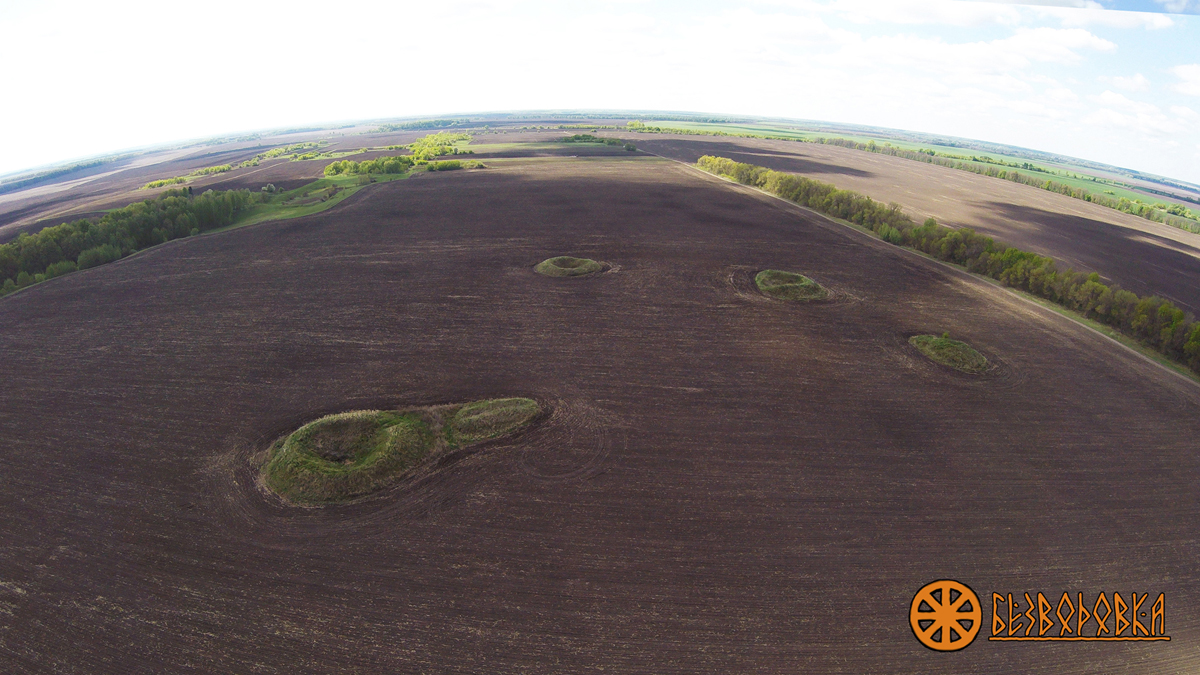
Bezvodovka: Solar Observatory
Used with permission - Bezvodovka.com
A group of ancient mounds lies in Chernihiv region, nearby the city of Ichnia, at Bezvodovka plateau, Ukraine. While some mounds have been destroyed by people and machinery, others were described by scholars in 2nd millennium BCE. The combination of ancient topographic maps and new research methods revealed the scattered mounds to be a single complex. Occupying an area of 20 square kilometers, aerial photography, and computer applications have made it possible to determine the purpose of the Bezvodovka mound complex.
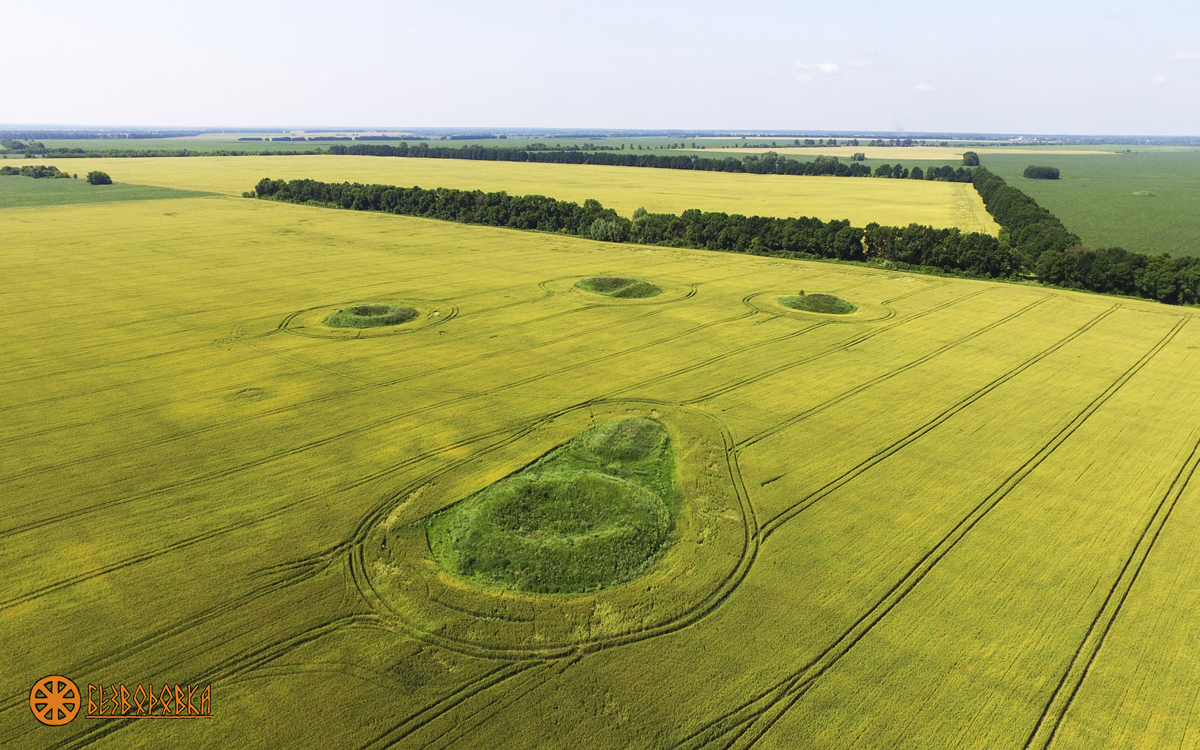
Mounds of Bezvodovka
Used with permission - Bezvodovka.com
If one stands in the center of the complex, they may see the sun rise and set behind the man-made hills on days special to the people since time immemorial. The most important holidays of each year fall upon these special days: the summer and winter solstice, along with the spring and fall equinoxes. Bezvodovka is an ancient solar observatory akin to the English Stonehenge or German Goseck. Why is it a solar observatory? The reason is that the movement of the points of the sunrise and sunset, along with other celestial bodies, marked on the horizon. Solar observatories marked the regularities of their movement over the celestial sphere. Bezvodovka is an instrument of incredible scale, the components of which are land, sky and cosmic objects. Determining solar and lunar cycles enabled ancient astronomers to calculate the dates of lunar and solar eclipses. The dimensions of Bezvodovka observatory and distances between its principal sights, which range from 800 to 4000 meters, imply high precision measurements of azimuths to the points of emergence of the sun on the horizon.

Sunset at Bezvodovka
Used with permission - Bezvodovka.com
The solar observatory should be considered not only an interesting archeological monument but also serves as existential evidence of a civilization in Ukrainian territory thousands of years ago. Its representatives created a wide-scale project, organized the people for the purpose of construction, and researched the space by means accessible to them. Bezvodovka has conceived its secrets for a long time, but now it reveals the knowledge of ancient astronomers.
A Solar Observatory
In a circular position, four ancient mounds rest with the diameter of 185 m each, approximately one kilometer north of the extinct village of Bezvodivka, of Chernihiv region’s Ichnia district. The complex is located at the height of 170 m above the sea level on a plateau, beside the watershed of the rivers of Ichenka, Bezvodivka, and one of the mouths of the Smosh river. They are described in scientific papers as mounds of second millennium BCE build by nomadic tribes. Yet, if one reviews them from a wider perspective, they will be forced to doubt in the scholars’ conclusion.
On Schubert’s map (1861), there are 6 mounds depicted in a circular position. Four of them have an elongated shape. Notwithstanding, that map may be not precise enough, but it enables one to imagine how the complex looked 150 years ago. Four large mounds and one satellite mound have survived until present, as some of the mounds were destroyed by ploughing and human indifference.
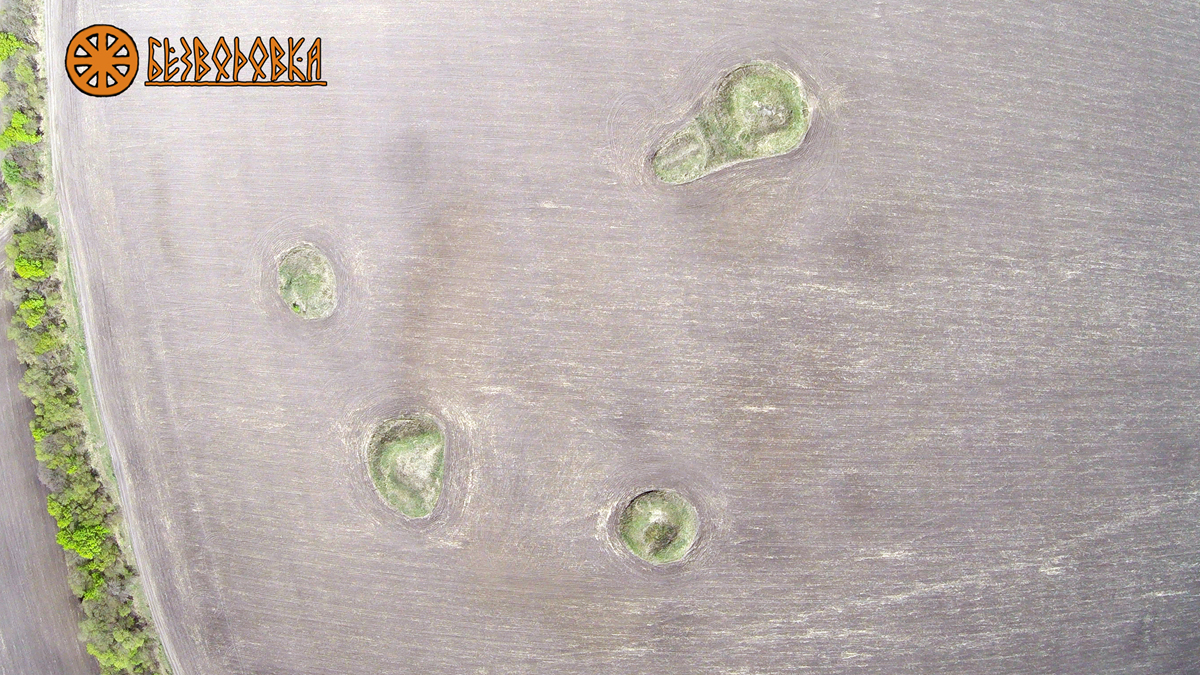
Bezvodovka high aerial view
Used with permission - Bezvodovka.com
The remaining mounds allow us to presume eight existed and served as the sights for astronomic observations. In a photo of the satellite mound, near those surviving, one can see dark crosses at the place of the ploughed mounds. There was not a sight on the Northern side of the complex, because the traces of its existence are absent on the map and the land surface. The Western sight suggests the existence of the Eastern one, the Southern Western sight suggests the existence of the Southeastern one, and the Northeastern sight suggests the existence of the Northwestern one. Six sights mark the astronomic events of the rise and set of the sun in days of winter and summer solstice, and the autumn and spring equinox. It is unknown what the Southern sight points to. The photo shows the reconstruction of a possible view and location of close sights. They contain a caption of the azimuth and the day of astronomic events which are indicated by them. They may also have been used for observations of the Moon. The observer’s workplace was located in the center of the complex, at the same time, the opposite sights might have been observer’s workplaces.
Schubert’s map indicates the Distant Sights (DS) that were used for more precise azimuth measurements, East and West of the sun, with the accuracy of up to one minute of arc.
The distance between:
the center of the complex and the Western DS is 830 m;
the center and the Northern DS is 1600 m, which is twice as great;
the center to the Southwestern and to the Southeastern DS is 3320 m, which is once more twice as great as the distance between the center and the Northern DS.
A distinct regularity arises: 8302 = 16602 = 3320.
The Southeastern and Southwestern DS are located 4 times further apart than the Western DS, because determining the points of winter and summer solstice is a more complicated task than determining the autumn and spring equinox, as on the days that are close to the days of the equinox, the movement of the points of the West and East along the horizon is barely noticeable.
There are grounds to assume that the observatory was founded in times when the famous solar observatories of Arkaim and Stonehenge were built–about three to five thousand years ago. One may draw an analogy between them due to the following reasons:
- Arkaim is located at Latitude 52º39" North
- Stonehenge is located at Latitude 51º11" North
- Bezvodovka is located at Latitude 50º31" North
The three observatories at the distance of nearly two thousand kilometers between one another are located within a single belt where the real shape of the Earth (non-ideal sphere) intercrosses with the imaginable correct shape.
The diameter of the central circle of the close sights:
- of Arkaim is 150 m,
- of Stonehenge is equal to 100 m,
- And of Bezvodovka is equal to 185 m.
The three observatories have the Northeastern sight of the sunrise on June 22–when there is the longest daytime within a year–making this sight especially distinct.
Holy Geometry
Bezvodovka solar observatory geometry is determined by the terrain of the area, however, at the same time, its mathematical proportions perfectly fit the landscape. The sorcerers/astronomers observed nature and its phenomena, and knew its laws, therefore the mathematics of the harmony of the surrounding world is presented within the observatory’s geometry. The horizon observatory of Bezvodovka is not a random group of land mounds, but rather is a complex planned mathematically with geometry. This is evidenced by the proportions laid by the architects into the observatory’s structure.
The proportion is quite simple. However, the mathematics of Bezvodovka is not limited to that. I cannot express how amazed I was when, comparing the distances between the center and the distant sights, I discovered the relation of 1.618, that is, the "golden number" or “golden proportion.”
Euclidis was the first to describe the golden proportion in 300 BCE. This proportion, or "harmonic distribution", as it was also called, was used by the ancient Egyptians in their architecture. After Euclidis, the divine proportion is found in works of the Medieval architects and painters, including Leonardo da Vinci. At Bezvodovka, the “golden number” is presented in the relation of the distances between the center and the Western distant sight (830 m) and the center and the second Western DS (1343 m):
- 1343/830 = 1.618
Also, the distance between the center and one of the Northern DS (1830 m) correlates with the distance between the center and four distant sights that are 2960 meters apart, in accordance with the golden proportion:
- 2960/1830 = 1.618
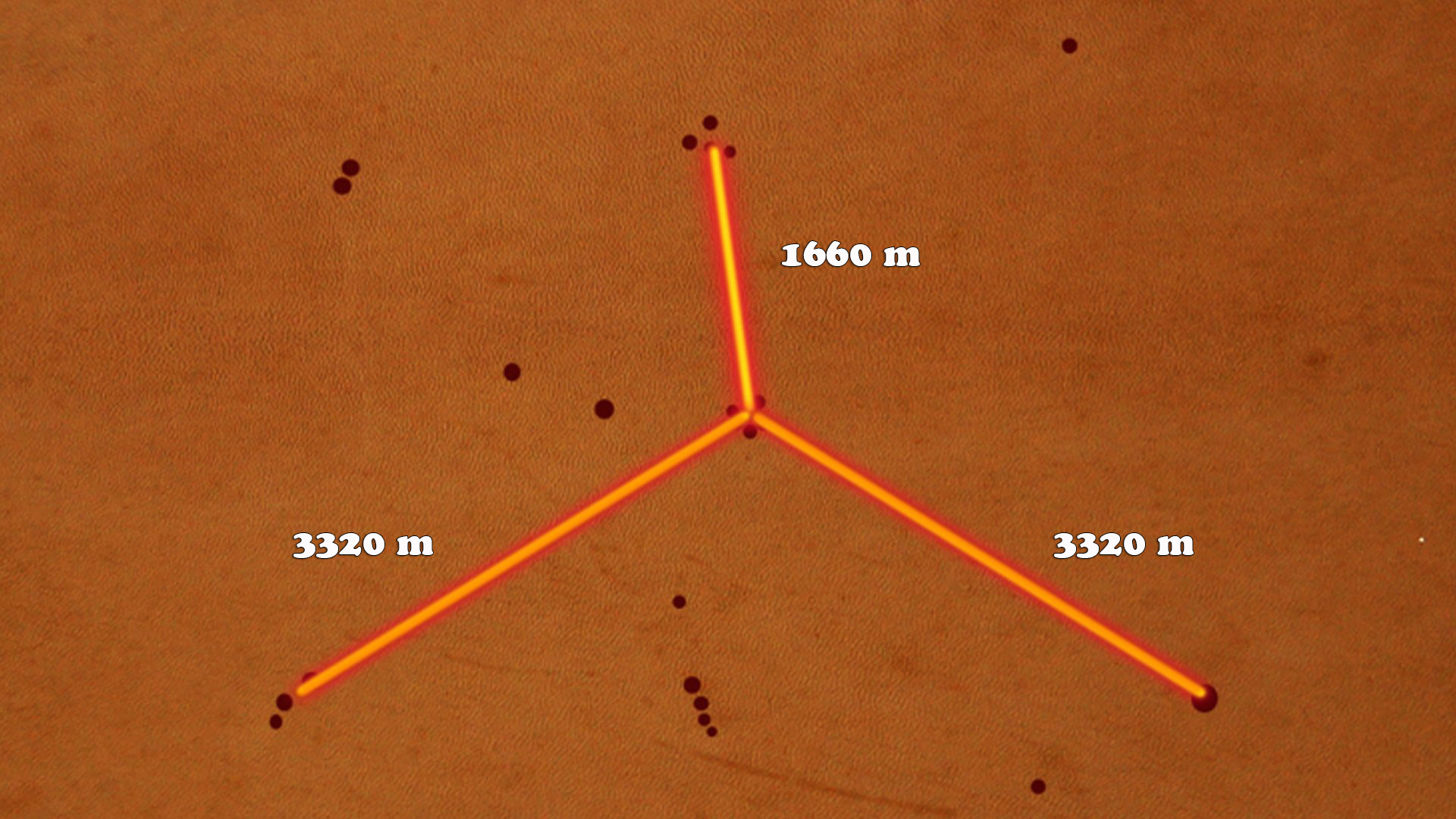
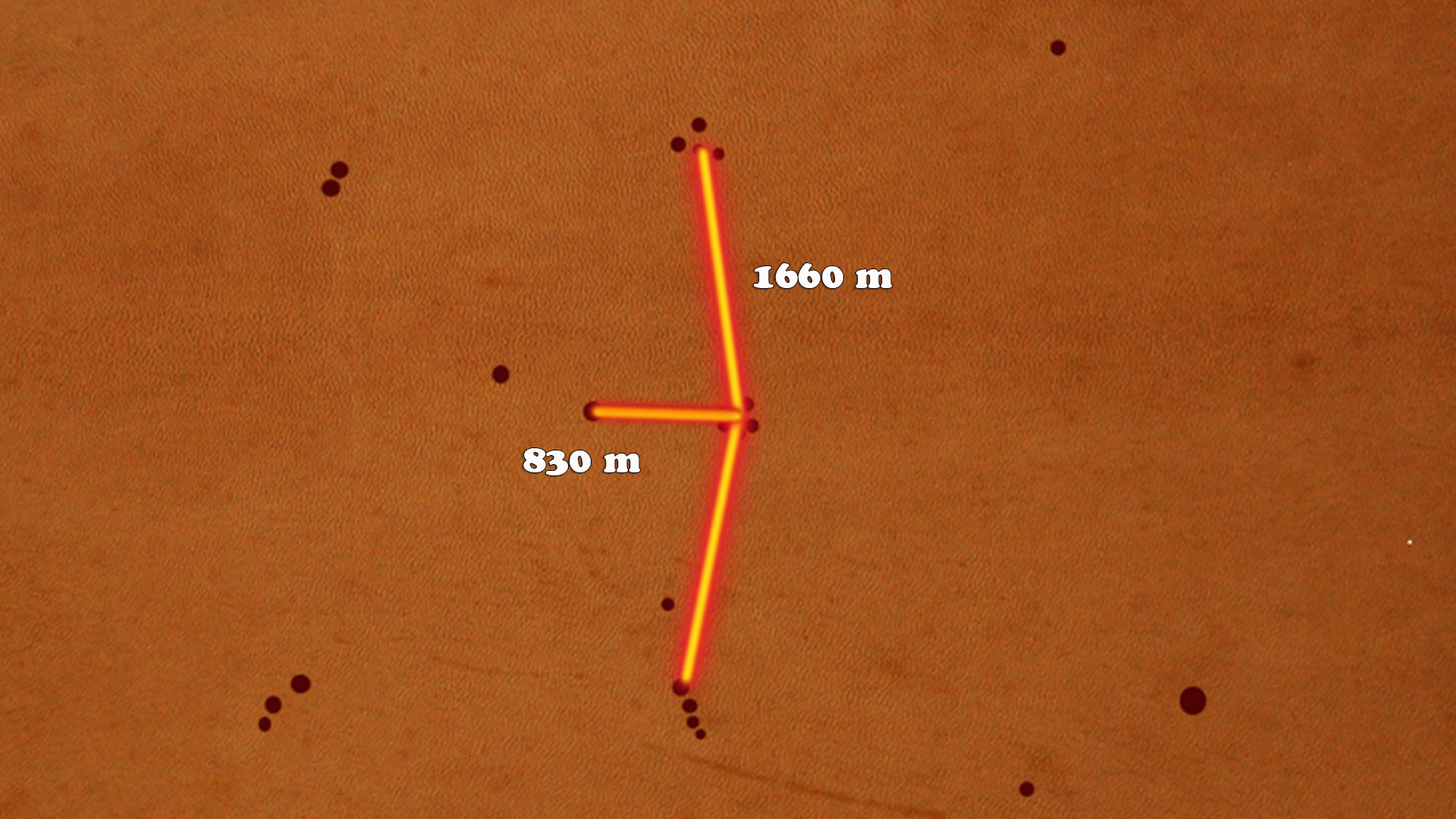
Distance ratios at Bezvodovka
Used with permission - Bezvodovka.com
The movement of the sun, moon, stars, and constellations (in conjunction with the divine "golden proportion") is taken into account within the design. The proportion is divine, because nature is based on it: seeds in a sunflower’s heart, leaves on the plant’s trunk, mollusk’s shell, DNA spiral curve, human body, spirals of the cyclones in the atmosphere of the Earth, and distant galaxies are arranged as the “golden proportion” or “golden” number.”
Within nature, one may also find a "golden angle" which is equal to 137.50 and manifests as a spiral (i.e ideal placement of seeds and leaves, so that each following row does not develop in the same direction as that of the previous one and they do not interfere with each other). An interesting, and probably non-random, coincidence is that the angle between the azimuth of the rise of the sun on June 22, the day of summer solstice (49º) and the azimuth of its set on September 22, the day of autumn equinox (271.5º) is also a “golden angle” with the value of 137.5º. The distant sights of the summer solstice and the spring and autumn equinox mark this angle. The relation between the greater and the lower angles within the limits of the circle constitutes 222.5º/137.5º = 1.618, or, simply put: the “golden number.”
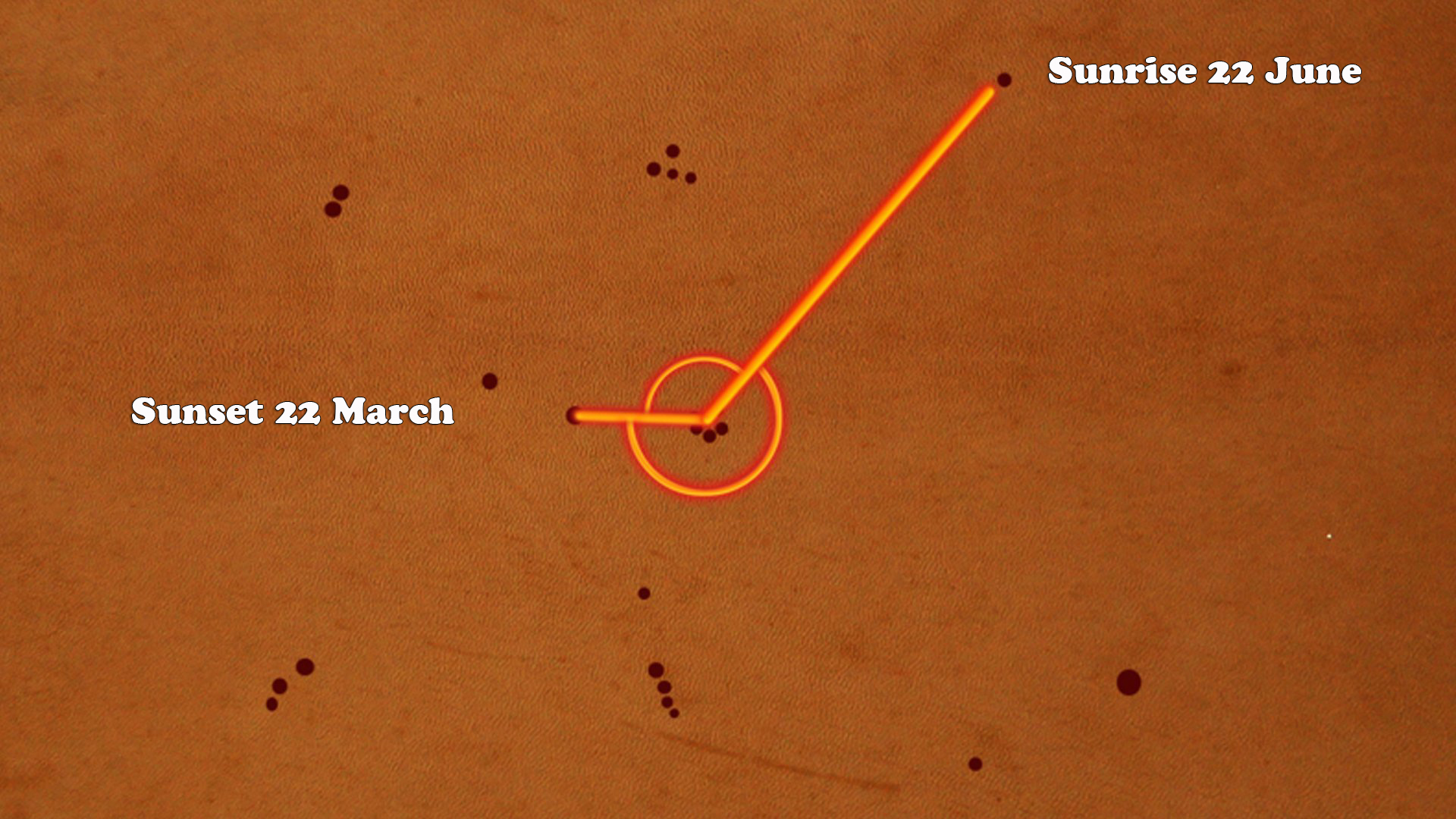
Golden Angle at Bezvodovka
Used with permission - Bezvodovka.com
If one lays Fibonacci’s "golden spiral" over the schematics of the observatory in a way so that its beginning starts at the center, the spiral will proceed through a few close sights and then through some distant sights. Now it is clear why the distance between the center the Western distant sight is specifically 830 m rather than 700 or 1000 m. The Fibonacci spiral also explains the distance of 2960 m to some distant sights. Consequently, the entire structure of the Bezvodovka horizon observatory is transfused with the “golden number.” It was created long before Leonardo da Vinci, Leonardo Pisano (known as Fibonacci), and even long before Euclidis, the “father of geometry.”
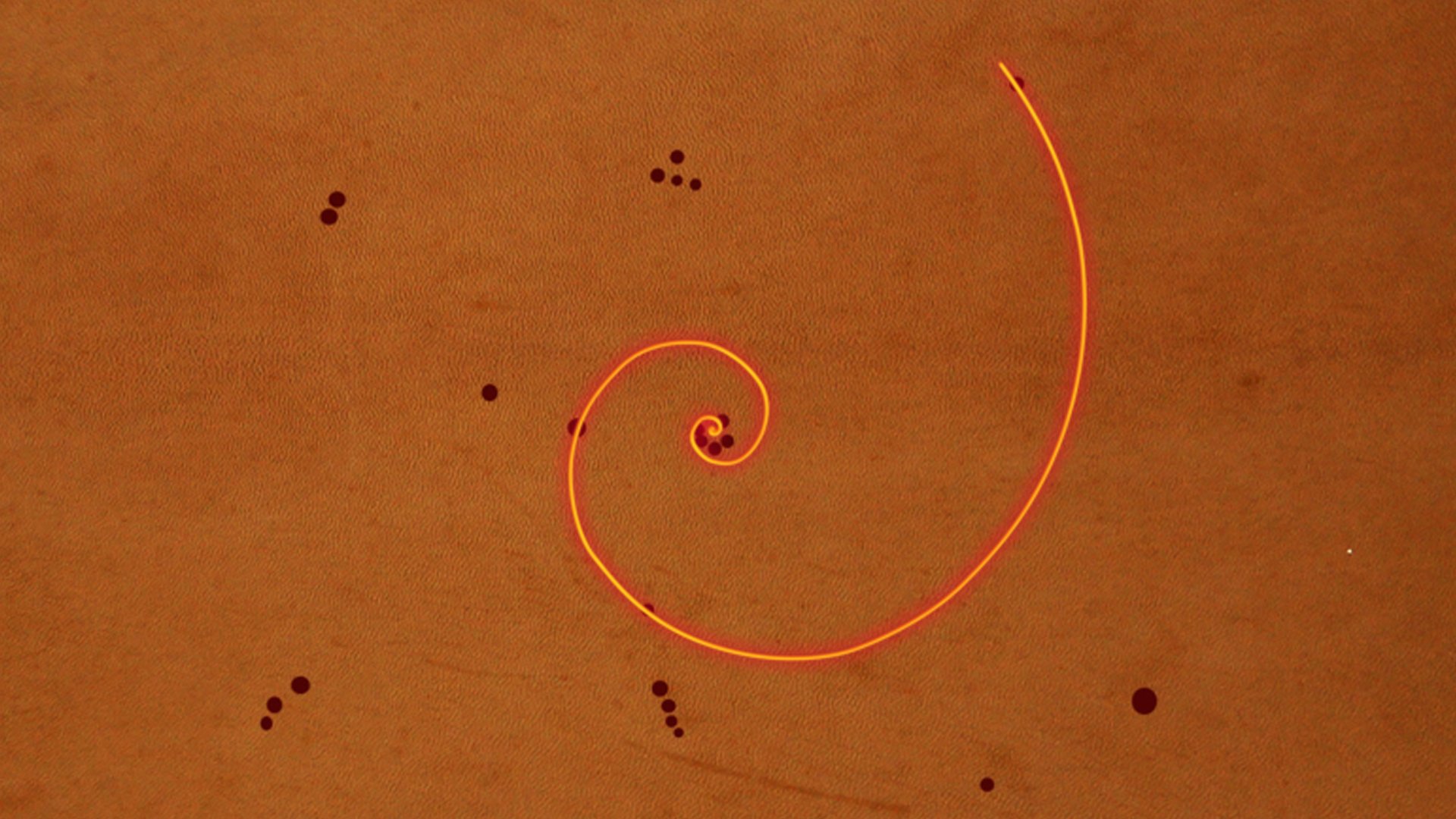
Golden Spiral over Bezvodovka
Used with permission - Bezvodovka.com
You may check all distances and figures. Now this raises the most interesting question: "Who required such knowledge and for which purpose?"
Each close and distant sight of the Bezvodovka solar observatory occupies its place for a precise reason according to the project planning. This project was not designed by simple construction, which is evidenced by its extraordinary complexity since Bezvodovka encompasses a great number of variables coordinated in a harmonious way. These values are distances between the sights and the geometric figures that they form, which are arranged in a mathematical way by proportions, number F 1.61 and number π 3.14.
In October 2016, Solar Observatory Bezvodovka was presented at the 27th International Festival of Archaeological Film.
Divine Geometry II
The close sights are called the "Robleni Mohyly" (“Made Graves”), and form a circle with the diameter of 185 m. Furthermore, one may draw a circle with the radius of 2960 m through four distant sights. To make a circle of such scale, one should know the geometry of the circle and its basic component that is number 3.14.
I found evidence for π, and it is composed by the distance from the center to the Northern distant sight (1830 m) and the distance between the Southeastern and Southwestern distant sights (5746 m): this equals 3.14.
The mathematical relationship indicates that the portion of 1830 m is the radius of the circle.
Length of the circle L = 2 π; r = 23.141830 = 11492 m.
Length of the circle L ito the line between the SE and SW sights is 11492: 5746, namely 2:1.
Area of the triangle (sides 4540; 5746; 4770) S∆ = 10.51 sq km.
Area of the circle (radius 1830 m) Sо = πr2 = 3,14 * 18302 = 10.51 sq km.
As one may see from the calculations, all values are not accidental and they are related. If one of them is changed, this relation will be lost.
Here comes the most interesting part! The ancient astronomers sent us a message that is hard to conceive. There are no indications of this fact in the available papers. Therefore, I will be the first to state it and reveal a secret of thousands of years.
Bezvodovka observatory is located at Latitude 50º51", that is almost equal to the angle of inclination of the Great Pyramid. However, why does the pyramid indicate this very latitude? The length of circumference of our planet at Latitude 50º51” is equal to 24768 km. The relation of the length of the equator to the circumference of the planet, which is indicated by the Great Pyramid, is 40075 km / 24768 km = 1.618.
This is a golden proportion underlying the architecture of the Pyramid of Cheops and Bezvodovka. At this very latitude, there are five known horizon observatories.
| Oberservatory | Latitude |
|---|---|
| Aivebury | 51º25" North |
| Stonehenge | 51º10" North |
| Goseck | 51º12" North |
| Bezvodovka | 50º51" North |
| Arkaim | 52º38" North |
Thus, the ancient engineers, architects, and astronomers possessed a system of knowledge in the domain of mathematics, geodesy, astronomy, and philosophy. This enabled them to create a measuring device of enormous dimensions: the Bezvodovka solar observatory. The level of knowledge available to the ancient civilization, along with the information they obtained at horizon observatories, challenge us to revise our history.
Learn More About Bezvodovka
References
- Learn more from bezvodovka.com
About the Author
Oleksandr Klykavka is an agrochemist and soil scientist from the National Agricultural University in Kyiv, Ukraine.